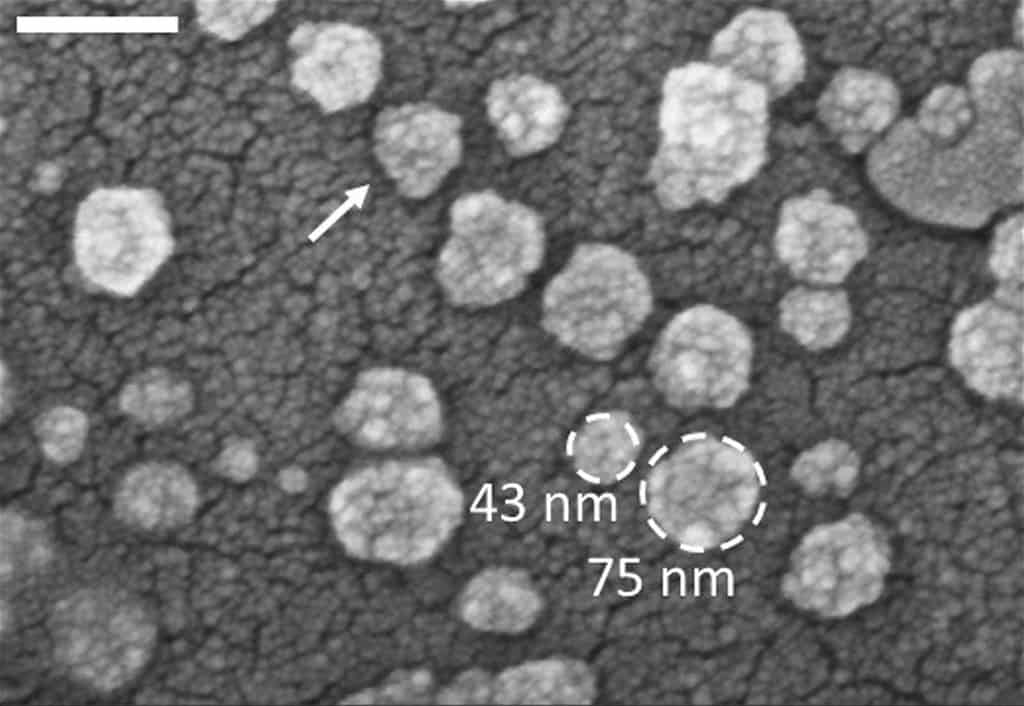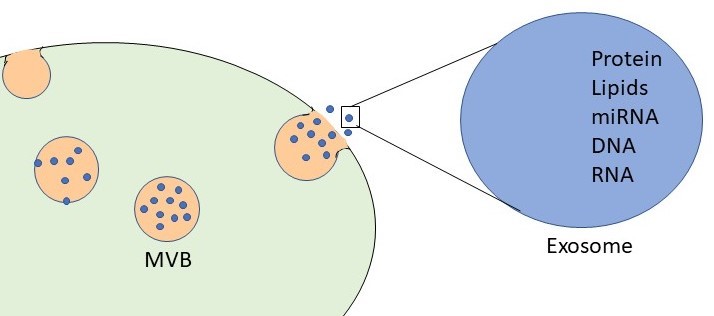What is Exosome Therapy? Move Over PRP, Here Comes the Secretomes: Exosomes are vesicles that carry protein, mRNA, and lipids that are deliverable to the extracellular milieu at the size used for cells to communicate with one another. They can also be used as molecules of 30 to 120 nm. They are produced naturally within the body.
Exosomes are the method through which mesenchymal stem cells, for instance, send their instruction to other cells on how they want those cells to behave. In other words, it contains instruction through which the stem cells function. So, by capturing the message, we can deliver stem cell-like treatment without delivering the stem cells themselves. Instead, we would deliver their command and deliver that command to the cells that carry it out. By doing so, we are removing the risks that come with the stem cells themselves.

Those considering exosome therapy may have heard of the funny word from Keeping Up with the Kardashians star Kourtney Kardashian. The reality icon and Poosh founder has raved over a human exosome-enriched moisturizer called Exo Face alongside many other stars such as Sarah Hyland and Sofia Vergara. Although products like Exo Face have earned rave reviews they are still only a temporary solution that requires a consistent application. Read on to learn more about the clinical exosome treatment and its potential role in anti-aging medicine.
How Do Exosomes Work?
If your bloodstream is the ocean, exosomes are millions of messages in tiny bottles waiting for passersby cells to pick them up. Once they pick the exosomes up, the cells change their behavior based on what the message says. In short, an exosome is a receptacle for proteins and other molecules that are produced and released by cells and delivers messages to other cells.

Exosomes derived from stem cells have been used to repair aging body tissues because they have massive regenerative potential. Studies suggest that can potentially influence cells to heal themselves and may also help remove cellular cytotoxins (1). Overall, practitioners have taken an interest in exosomes recently because unlike stem cells, they can be manipulated to deliver a specific result.
These extracellular vesicles can play various roles in tissue repair and regenerative processes. They have also been used as specific biomarkers for hepatocyte damage and inflammation in acute liver injury. The role that an exosome plays depends upon the cell it originated from. In addition to other cytokines, chemokines, and growth factors, almost all exosomes contain the following useful growth factors:
- MIP-1
- VEGF
- SCF
- FGF
- TGFß3
What Are The Potential Uses of Exosomes?
Exosomes have the potential to treat many different conditions, including one that’s inevitable for all of us: aging. For instance, skin starts to wrinkle with older age because of an inability to regenerate important skin components. Exosomes might be able to slow this process because they promote skin cell regeneration on a cellular level (2). Research into exosomes for hair restoration, in particular, has happened as recently as Summer 2019.
Studies have shown that exosomes can potentially promote hair growth (3) likely by regulating the activity of follicular dermal and epidermal cells. Exosomes have even been proven to extend the hair growth cycle. Hair follicles that have remained in the telogen, or resting phase, convert to the anegan, or growth phase.
At the moment, there are two different ways that practitioners have used to deliver the exosomes for hair restoration. First, the doctor creates a serum of the exosomes and injects it. Micro-needling is another method that practitioners use. It involves puncturing the scalp with microneedles and applying the exosomes topically to the punctured sites. Researchers at UCLA found in Spring 2019 that micro-needling is preferable (4). Shaven mice using the micro-needling system grew their hair back in six days. Meanwhile, those who received injections saw their hair grow more slowly.
How exosomes differ from stem cell therapy?
Stem cell treatments require the use of whole cells to replace or reignite ones that are aging or do not work. They execute their functions by creating and secreting exosomes. On the other hand, exosomes are the vesicles that contain elements that have the potential to influence how other cells behave. They are like the bullet of a gun while the stem cells are the gun and person holding the gun. Also, scientists can derive exosomes from any cell type. Conversely, scientists must derive stem cells from either adult cells (e.g bone marrow, adipose tissue, and blood) or the embryonic. Most work cited are from adult cells as embryonic stem cells are not permitted in the USA
Exosomes have a clear advantage over stem cell therapy as there is a minimal risk of rejection by the patient’s body. Instead of replacing the person’s cells with unknown ones the body may reject, exosomes make changes to the ways that existing native cells function. Stem cells, however, have the advantage of being able to adjust their activity in tandem with the situation they encounter.
References
- Kwack, Mi H., et al. “Exosomes Derived from Human Dermal Papilla Cells Promote Hair Growth in Cultured Human Hair Follicles and Augment the Hair‐Inductive Capacity of Cultured Dermal Papilla Spheres.” Experimental Dermatology, vol. 28, no. 7, 2019, pp. 854–857., doi:10.1111/exd.13927.
- “Microneedle Patch Encourages Hair to Regrow.” C&EN Global Enterprise, vol. 97, no. 15, 2019, pp. 10–10., doi:10.1021/cen-09715-scicon10.
- Oh, Myeongsik, et al. “Exosomes Derived from Human Induced Pluripotent Stem Cells Ameliorate the Aging of Skin Fibroblasts.” International Journal of Molecular Sciences, vol. 19, no. 6, 2018, p. 1715., doi:10.3390/ijms19061715.
- Panagiotou, Nikolaos, et al. “Extracellular Vesicles, Ageing, and Therapeutic Interventions.” Cells, vol. 7, no. 8, 2018, p. 110., doi:10.3390/cells7080110.
